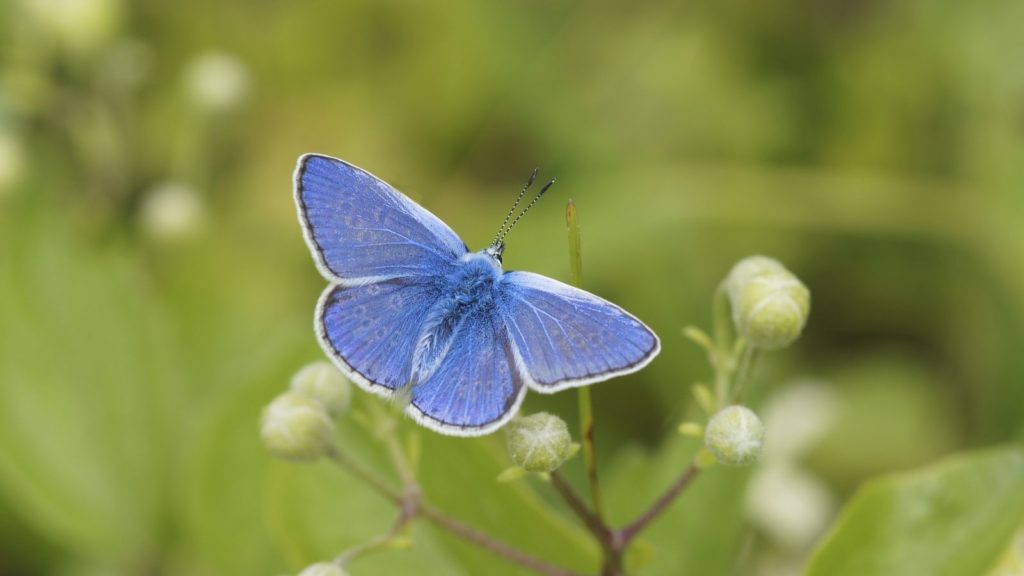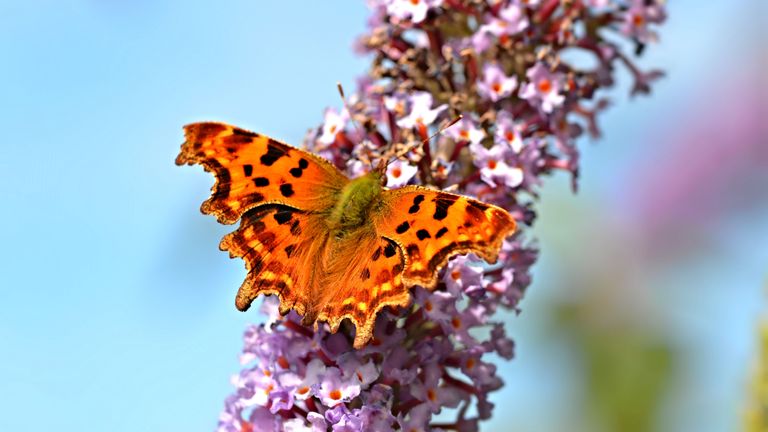Butterfly numbers ‘worryingly low’ despite good weather | Science & Tech News

Butterfly numbers are still “worryingly low” despite a warm and sunny spell leading to increased sightings of certain butterfly species over the summer.
Sightings of the popular garden species, the Comma, increased by 95% compared to last year, according to the results of the annual Big Butterfly Count in the UK.
The Gatekeeper, a species often found along hedgerows and woodland rides as well as gardens, was the most spotted butterfly during this year’s count, with a 58% increase in reports from last year.
However, experts are worried the UK’s population of butterflies and day-flying moths is still in decline, with wildlife charity Butterfly Conservation describing the numbers as “worryingly low”.
Dr Richard Fox, head of science for Butterfly Conservation, said: “We might have expected this summer to have been a much better one for butterflies given the good weather we experienced in many parts of the UK.
“The fact that more butterflies weren’t seen is concerning and it’s clear that much more needs to be done to protect and restore habitats to aid nature recovery.
“The sun could shine for days on end, but we still won’t see more butterflies unless there is habitat for them to thrive in.”
Read more: Britain’s bizarre and wonderful woodland nature including a Phallus ‘Stinkhorn’
Almost 100,000 butterfly counts were carried out between 15 July and 7 August, as citizen scientists spent a combined total of more than two-and-a-half years counting different species in their gardens, local parks and the countryside.
The results show an average of just under nine butterflies per count, which conservationists say is an all-time low in the 13 years since the project began.
However some species have increased including the Common Blue and the Holly Blue, with 154% and 120% increases respectively.
The Gatekeeper was the most spotted butterfly during this year’s count, with a 58% increase in reports from last year
The Holly Blue had only occasionally been recorded in Scotland prior to the 2000s, but after becoming firmly established in Edinburgh from 2006 and Ayr from 2008 the species has subsequently spread across swathes of Scotland, the experts said.

Sightings of the popular garden species the Comma increased by 95% compared to last year
The Comma has also been making a slow comeback from its low point in the 1910s and expanding its range rapidly northwest, the team added.
Dr Zoe Randle, senior surveys officer at Butterfly Conservation, said: “The vast majority of Big Butterfly Counts are done in gardens, which makes this data especially valuable because this type of habitat is under-represented in many of our other schemes.
“We can create habitat for butterflies such as the Holly Blue and Comma in our gardens, by cultivating Holly and flowering Ivy for the former and growing Hop, elms and nettles for the latter.
“Gardens that are wildlife friendly can provide vital habitat for these insects, allowing them space to feed, breed and shelter.”
The Big Butterfly Count, one of the largest citizen-science projects of its kind, helps scientists gather important data on how butterflies and moths are coping with changing climate and habitat loss.
Next year’s count will take place from 14 July-6 August.
Recent Posts
- The Power Shift: How Travelers Are Transforming the Future of Business Travel
- Universal Orlando Resort reveals first pictures of new Harry Potter ride
- Adaptive Leadership in an Era of Experiences
- Wanderland London Releases first-of-its-kind Kids Hospitality Report
- EasyJet unveils Cape Verde flights and packages for summer 2026






Recent Comments